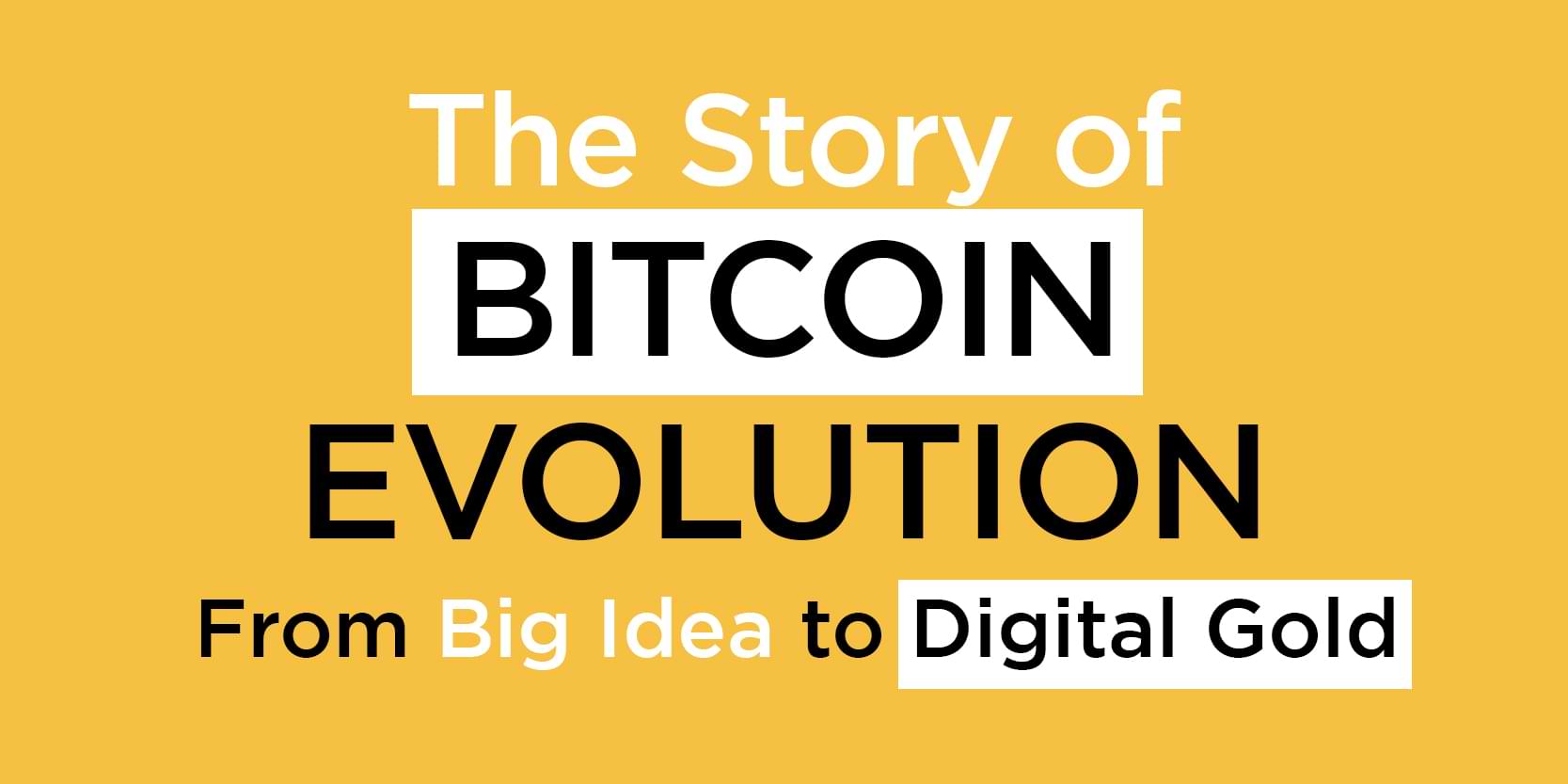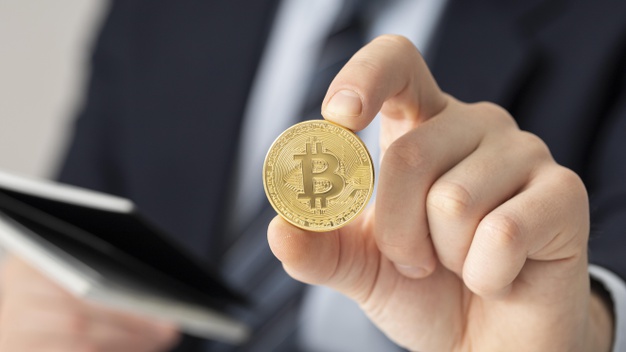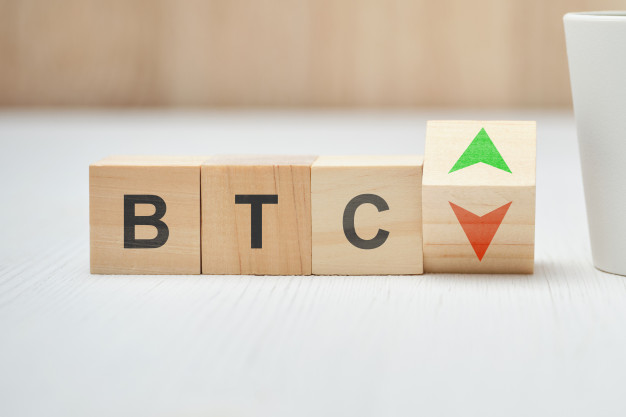
The Story of Bitcoin’s Evolution: From Big Idea to Digital Gold
- Prologue: The Pre-Bitcoin Era
- Bitcoin FAQ
- How to buy Bitcoin?
- How to mine Bitcoin?
- Who is Bitcoin’s competitor?
- What caused the rise of Bitcoin?
- What was the original price of bitcoin?
- Will Bitcoin prices keep going up?
- Will Bitcoin reach 100k in 2021?
- Should I invest in Bitcoin?
- Will Bitcoin exist in 15 years?
- Does Bitcoin have a future?
- Who is developing Bitcoin?
In the past month, Bitcoin’s value has grown exponentially to levels the market has never seen before. From its $20,000 milestone in mid-December to over $38,000—and still growing—today, Bitcoin continues to live up to its identity as digital gold. And its growth hasn’t stopped. With anywhere from 3% to over 10% in gains over each 24-hour period, JPMorgan has forecasted that the coin has the potential to reach the $146,000 mark in the long term.
Bitcoin hasn’t left the headlines in the past month because its out-of-this-world price breakthroughs mark a sky-high milestone for the industry, and it’s gotten many people excited. Who wouldn’t, when all the most influential financial edits have been reporting every little implication associated with this rise. It’s not just ordinary people who have finally caught on to the crypto-high, though, as Bitcoin has finally made it to the world of influential financial figures.
In November of last year, Bill Miller, the legendary Wall Street investor, stated that he highly recommends investing in Bitcoin despite the massive price surges. He branded it as the “single best performing asset class” over the past decade, beating physical gold. Stanley Druckenmiller, a billionaire hedge fund investor, also jumped into the Bitcoin craze late last year. He’s one of many other high-profile billionaires to put Bitcoin into their investment portfolio.
The bottom line in the evolution of BTC is that Bitcoin’s latest bull run has brought plenty of attention to BTC and cryptocurrency as a whole. But Bitcoin’s early days weren’t spent in the same adrenaline-filled, high-profile playing field. It started humbly in 2008 when one person’s big idea stole the hearts of its first few miners—and the rest is history.
Prologue: The Pre-Bitcoin Era
From 1998 to 2008, the world went from warming up to modern technology to embracing its mass adoption. In between those years, some great minds started to think of ways to leverage the idea of digital money, which was first coined in 1983 by David Chaum in an attempt to make financial transactions anonymous. The pre-Bitcoin attempts of creating online currency followed the idea of anonymity through the use of encrypted ledgers.
Hashcash was one of the more successful products of this era. It used the Proof of Work model, which may sound familiar because it’s the same algorithm that Bitcoin still uses to generate coins. In 1997, interest in Hashcash grew, and its system faced a processing power issue that made it less-than-ideal. While it was able to bounce back from that failure, people lost interest in Hashcash, and it eventually lost its place as a pre-cryptocurrency coin.
But Hashcash’s legacy still lives on, as Bitcoin adopted many of its systems and used them as a springboard to become the frontrunner of cryptocurrency that we know today.
Chapter 1: The Anonymous Satoshi Nakamoto
On October 31, 2008, at the heart of the financial crisis, a mysterious individual who went by the pseudonym Satoshi Nakamoto posted a message on a cryptography mailing list with a link to a white paper titled Bitcoin-A Peer-to-Peer Electronic Cash System. Mr. Nakamoto introduced Bitcoin as a decentralized digital currency, which doesn’t rely on a central administrator to process transactions. Instead, anyone with a computer can be involved in the public ledger of transactions. People can send coins to each other through a peer-to-peer network without relying on third-party intermediaries, such as Paypal or banks.
The idea was revolutionary, but it only reached a small, select audience. It wouldn’t be years later before most corners of the world would even know the words “Bitcoin” and “cryptocurrency.”

Chapter 2: The First Block
On January 3, 2009, the first cryptocurrency block was mined, spearheading the launch of Bitcoin’s blockchain network. It became known as the “genesis block,” as it marked the beginning of a generation of digital currency. For a while, BTC was only available through mining, a process where computers solved complex puzzles to generate new BTC or validate previous transactions. Because there was no monetary value associated with the coin, only hobbyists and enthusiasts took part in the process and traded coins for fun.
Chapter 3: The Start of Value-Based Transactions
There wasn’t a clear way of assigning a value to cryptocurrency, which, at this point, was still a very new concept that most of the world had no idea about. That changed on May 22, 2010, when a man from Florida named Laszlo Hanyecz took to the Bitcointalk forum and proposed a deal. He offered to pay 10,000 BTC for two large pizzas delivered to his home. A British man accepted the offer, marking the first value-based Bitcoin transaction.
The two Papa John’s pizzas sent to Hanyecz’s home mark a historical moment in Bitcoin history. For the first time, a larger scale of people saw the possibility of making day-to-day transactions with cryptocurrency. Today, those 10,000 coins would be worth over $387 million.
Trading Bitcoin became more widespread. People negotiated deals in forums, where BTC was exchanged for a range of goods and services. There wasn’t a hard set value for Bitcoin at this point, as people perceived BTC in however way they wanted. Bitcoin appeared in coin exchanges in 2010, streamlining the buying and selling process, and finally giving it a global value against the dollar. It started by costing only a few cents eventually moved on to become a highly volatile asset, so this is the picture of Bitcoin value evolution.
Chapter 4: The Emergence of Altcoins
Bitcoin’s audience started to grow as more and more people became attracted to the idea of cryptocurrency. But even during the earliest stages of Bitcoin’s design, the issue of transaction speed, cost, and privacy were already present. Some people understood these flaws and attempted to create their own blockchain networks to address the former’s issues. It resulted in the emergence of altcoins—short for alternative coins—which are cryptocurrencies that came after Bitcoin’s historical rise and Bitcoin's evolution.
Litecoin (LTC), Namecoin (NMC), and Ethereum (ETH) were some of the first to make it to the public in 2011. They aimed to improve Bitcoin’s code and transform it into a system that can adapt to other uses. For instance, Ethereum’s network can be used to create decentralized applications. This diversity of purpose is present even in the modern cryptocurrency sphere.
Chapter 4: The Volatile Cryptocurrency Market
In 2013, BTC was trading at a humble $13.5. Prices started to spike at the start of the second quarter of the year, when it saw an increase to over $200. Bitcoin had never crossed the $30 line until this point, so it was a huge milestone, but raised concerns among conservative investors. Mass media coverage drove this short-lived bull run, as Bitcoin reached a mainstream audience for the first time and garnered interest among less-informed individuals.
Its first massive meltdown in 2013 came at the end of April, shortly after reaching the $233 price point. Its value went down to $67 in one night–a 71% drop that took over half a year to reclaim. But that wasn’t the worst of the year. Bitcoin’s price remained stable at $120 for a few months until the end of November, when it saw the second bull run of the year, surging prices up to $1,150. A month later, by mid-December, the infamous 2013 Bitcoin bubble happened. Prices plummeted to $300, and it would take years before the coin would reclaim its former glory.
The collapse was caused by a series of events. First, Chinese investors took a sudden interest in Bitcoin—a trend that started in October of 2013. The demand was so exponential that prices in Chinese exchanges scaled almost twice compared to other exchanges worldwide. With so many people purchasing the coin in a short period, prices fluctuated and became unstable. Generally, a 20% to 30% price spike overnight is unsafe as it can suddenly plummet just as quickly.
Second, the Chinese government started cracking down on cryptocurrency. On December 5, 2013, China’s central bank banned banks from processing Bitcoin transactions. This event was likely the catalyst that caused the major Bitcoin bubble in the hostory of Bitcoin evolution.
Chapter 5: The Perfect Set-Up For Crime
One of cryptocurrency’s biggest downfalls is that it’s completely digital and anonymous, making it attractive to hackers and criminals looking to score big bucks. In 2014, the world’s biggest Bitcoin exchange, Tokyo-based Mt. Gox, ceased its operations—and that was the last people saw of the site and 850,000 BTC. This event became a worldwide phenomenon, which remains one of the biggest Bitcoin theft cases in history.
The story of Bitcoin evolution went like this: Mt. Gox handled approximately 70% of all BTC transactions from 2011-2013. But its reign wasn’t smooth, as it had to deal with technological issues from outages and hacks, to run-ins with the US government and a lawsuit worth millions of dollars. In 2014, Mt. Gox suddenly shut down, deleted its social media, disappeared along with 850,000 BTC, and filed for bankruptcy. In total, about $450 million worth of BTC were stolen, which would equate to over $33 billion today.
The wild ride was driven by a hacker who had been stealing Mt. Gox’s BTC supply from 2011-2013, remaining under the radar the entire time. While recent developments merit positive news for victims (spoiler: they’re getting their money back), the theft represents one of cryptocurrency’s biggest downsides. The digital sphere is a hub for criminal activity, and both blockchains and users need to amp up security to prevent the same mistake cycle.

Chapter 6: The $10,000 Milestone And The Future
In 2017, Bitcoin was the first to reach yet another legendary milestone: a value of $10,000 per BTC. It continued to rise and fall in value and garnered the interest of more and more individuals and corporations. Now, in 2021, Bitcoin is experiencing what is perhaps its greatest bull run yet. With prices steadily rising by the thousands daily and a projection of reaching the $100,000 mark soon, the horizon is looking positive for BTC—for the meantime, at least.
Given the market volatility and more governments looking into cryptocurrency, any major developments—such as globally adopting cryptocurrency or banning it completely—will affect Bitcoin's evolution, whether positively or negatively. It’s come a long way since its early days where hobbyists enjoyed cryptocurrency purely for its novelty and concept. Now, it stands at the throne of the world of investments as digital gold derived from a whitepaper and an individual’s ambition.
Bitcoin FAQ
How to buy Bitcoin?
-
Download a Bitcoin wallet, which will hold all your BTC.
-
Provide personal identification, an anti-crime procedure.
-
Set up your wallet by choosing a legal payment method.
-
Purchase BTC from a cryptocurrency exchange.
How to mine Bitcoin?
-
Set up your BTC wallet.
-
Get a powerful mining rig, usually valued at $1,000 or more.
-
Join a Bitcoin mining pool, where you can work with other miners to increase the mining success rate.
-
Get a BTC mining program, such as Computta and Hashflare.
-
Start mining.
Bitcoin adopted Hashcash’s Proof of Work model, which existed before the former’s inception in 2008. This mining structure is extremely power-hungry, as it’s essentially a race to completing the verification process first.
Bitcoin mining works like this: you have to verify up to 1MB worth of transactions by solving complex mathematical equations. But because there are thousands of miners worldwide, it’s a race against whose mining rig will be able to complete the process first, as there can only be one reward per sequence–which lasts 10 minutes. The winner receives the 6.25 BTC block reward.
Because more power equals faster computing power, miners build robust and expensive rigs to increase their winning chances as much as possible. Joining a mining pool will allow you to share computing power with the rest of the members. But if the pool successfully verifies the block, the reward will be split among the members.
Who is Bitcoin’s competitor?
There are plenty of altcoins that offer the same value proposition as Bitcoin, including Ripple crypto and Litecoin. Their goal is to facilitate digital transactions without relying on third-party intermediaries, such as banks and payment providers. However, Bitcoin is the only cryptocurrency that has been titled “digital gold.”
In terms of the asset class, no altcoin has yet to achieve the same success as Bitcoin. But some have been gaining traction over the past year. For instance, Ethereum boasts an over-600% growth over the last 52-week period. It’s also at the top of the investor watchlist as what will possibly be the next big cryptocurrency after Bitcoin.
What caused the rise of Bitcoin?
The major points in Bitcoin's evolution and development were marked by increased mainstream interest. In 2013, the infamous Bitcoin bubble was caused by its sudden popularity in the Chinese market. And in 2018, the second bubble resulted from Tether's (USDT)’s release, which made BTC trading feel less risky for new investors.
Many people still had doubts about putting real-life fiat money into digital currency with no tangible value. Tether is a stable coin, which means that each USDT is pegged to a corresponding asset valued at 1 USD. It made cryptocurrency trading feel like a smaller risk because investors could exchange BTC for USDT to measure against the volatile market. Naturally, it became a catalyst for people to take the plunge into the world of cryptocurrency.
What was the original price of bitcoin?
The first Bitcoin transaction was 2 Papa John’s pizzas for 10,000 BTC. It started the BTC trading revolution, which prompted people to trade tokens with no clear value. When Bitcoin made it to the exchanges in July 2010, it traded anywhere between $0.0008 to $0.08.
Will Bitcoin prices keep going up?
Despite seeing a $10,000 drop-in price over the past 2 weeks, experts are still optimistic about Bitcoin’s possible rally to $100,000 by the latter half of the year.
Will Bitcoin reach 100k in 2021?
A good number of analysts believe that there’s a high probability for Bitcoin to reach $100,000 sometime in 2021–most likely within 3 to 8 months. This prediction is based on the stock-to-flow modelling ratio, which measures the total BTC supply against the amount produced.
Bitcoin does a regular halving system wherein the BTC reward given to miners is halved every 4 years. In 2020, the block reward was reduced to 6.25 BTC. That means a smaller number of tokens can be “produced,” lowering the available supply and giving Bitcoin the leverage it needs to increase in value. That’s coupled with the corporate interest for BTC investments that boomed in late 2020.
Should I invest in Bitcoin?
Due to the positive Bitcoin price forecast over the next year, it’s advisable to invest in BTC–but only for the long-term. The market is extremely volatile, so massive price fluctuations are expected. These often tempt novice investors to panic sell despite only holding BTC for a short period.
Will Bitcoin exist in 15 years?
While 18 out of the 21 million total supply of BTCs have been mined, Bitcoin’s 4-year halving system will prevent the supply from completely running out until the year 2140. That allows miners to mine BTC for 119 more years.
However, by then, the cryptocurrency landscape–and the world–would have drastically changed. Technology will likely not be the same as how it is now. Naturally, blockchains and consumers would adapt to technology’s evolution and won’t be caught up trying to make 100-year-old processes work. As we can see from the evolution of BTC, there’s no real worry about the its disappearing or running out soon and in the distant future.
Does Bitcoin have a future?
Multiple factors can affect Bitcoin’s future, including:
-
Cryptocurrency acceptance among governments worldwide
-
The coin’s ability to attract investors both big and small
-
Increased mainstream interest in cryptocurrency
-
Bitcoin’s ability to retain the #1 spot on the market and in people’s minds, despite not solving its scalability issue
At the moment, the world is divided by their polar opinions about cryptocurrency. While some countries, such as Venezuela and Japan, have embraced digital tokens, others, such as Pakistan and Saudi Arabia, are still not sold on the idea of a new era of digital currency. Any major government bans, especially across bigger nations, will greatly affect Bitcoin and other cryptocurrencies’ future.
Bitcoin will also have to either solve its scalability issue or maintain its position as “digital gold”–the next big thing that has lured both big and small investors. While Bitcoin is banking on its “brand” to stay relevant, other altcoins back blockchains that develop innovative and large-scale projects that offer more value to consumers. Bitcoin’s challenge is to remain in the #1 spot despite increasingly scalable competition.
Who is developing Bitcoin?
Because the identity of Satoshi Nakamoto, Bitcoin’s founder, remains unknown, the platform relies on a huge developer base to make improvements on its open-source network. Anyone–even independent developers–can edit Bitcoin’s code or submit a Bitcoin Improvement Proposal (BIP), and the community must first approve it.
There’s a standard format for sending in a BIP, which will then be reviewed by BTC miners. Once they reach a significant majority consensus of 95%, developments can be rolled out. However, the community also has massive power in making decisions on Bitcoin’s future, as a community rally can overrule any unfavorable decisions made by the 95% miner consensus.
Unlike most altcoins, Bitcoin isn’t backed by a single company, making it harder for the platform to roll out major developments at a fast pace. But because it has amassed a passionate community–including companies that were established specifically for developing Bitcoin–and investor interest through its brand name, Bitcoin is still able to secure major partnerships. A recent success is its Paypal integration.





Leave a Reply
1 comments
Add comment ×